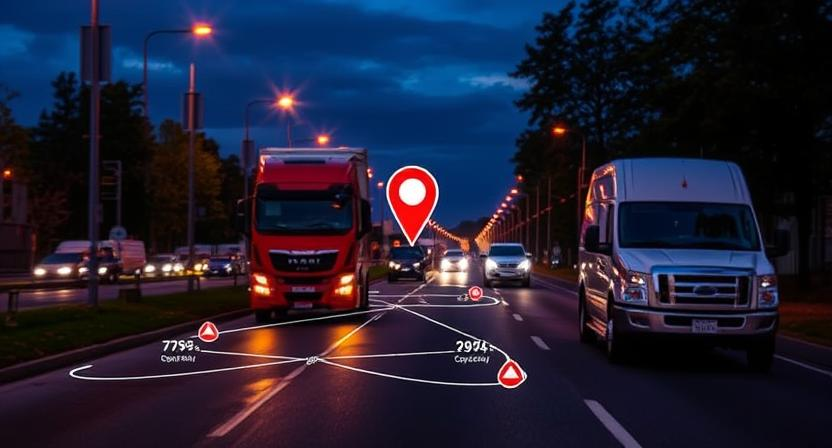Geofencing in Fleet Management: How It Improves Security & Productivity
Introduction

Geofencing technology is transforming fleet management by providing automated alerts, improving security, and boosting operational efficiency. By setting up virtual boundaries around specific locations, fleet managers can track vehicle movements, ensure compliance, and enhance driver productivity.
This article explores how geofencing works, its benefits, and best practices for implementing it in fleet operations.
What Is Geofencing?
Geofencing is a GPS-based technology that creates virtual perimeters around predefined geographic areas. When a vehicle enters or exits these areas, the system triggers automated notifications or actions. Geofencing is widely used in fleet management for monitoring, security, and compliance enforcement.
How It Works
- Defining Geofence Boundaries – Fleet managers use GPS or telematics software to set virtual zones around locations such as warehouses, delivery points, or restricted areas.
- Real-Time Monitoring – GPS-enabled fleet tracking systems continuously monitor vehicle locations.
- Automated Alerts & Actions – When a vehicle enters or leaves a geofenced area, the system sends notifications, logs events, or triggers security measures.
Benefits of Geofencing in Fleet Management
1. Enhanced Security & Theft Prevention
- Unauthorized Movement Alerts – If a vehicle moves outside its designated area, fleet managers receive instant alerts.
- Stolen Vehicle Recovery – Quick identification of unauthorized departures aids in faster recovery.
- Restricted Zone Enforcement – Prevents vehicles from entering prohibited areas, reducing risks.
2. Improved Operational Efficiency
- Optimized Route Management – Ensures vehicles follow designated routes, reducing fuel costs and delays.
- Automated Check-Ins – Eliminates manual reporting by logging vehicle arrivals and departures automatically.
- Delivery Time Tracking – Monitors on-time performance for better customer satisfaction.
3. Better Compliance & Safety
- Regulatory Compliance – Ensures drivers adhere to designated routes, reducing liability risks.
- Work Hour Enforcement – Helps monitor driver shifts and prevent unauthorized overtime.
- Hazardous Zone Alerts – Warns drivers before they enter dangerous areas.
4. Increased Driver Accountability & Productivity
- Reducing Idle Time – Identifies prolonged stops that impact efficiency.
- Unauthorized Use Prevention – Detects personal or unauthorized trips outside working hours.
- Performance Insights – Tracks driver adherence to schedules and service commitments.
Best Practices for Implementing Geofencing in Your Fleet
1. Define Clear Geofence Boundaries
- Set up geofences around warehouses, delivery hubs, customer locations, and restricted areas.
- Adjust geofence sizes to prevent false alerts while maintaining accuracy.
2. Integrate with Telematics & Fleet Management Software
- Use real-time tracking systems to receive immediate alerts and actionable insights.
- Automate reporting for better compliance and record-keeping.
3. Customize Alerts for Different Scenarios
- Set different alerts for entry, exit, unauthorized movements, and prolonged stops.
- Enable notifications via SMS, email, or dashboard alerts for quick responses.
4. Train Drivers & Fleet Managers
- Educate drivers on geofencing policies and expectations.
- Provide managers with training on using telematics tools for monitoring and decision-making.
5. Continuously Optimize & Review Geofence Settings
- Analyze geofencing reports to refine settings and improve accuracy.
- Adjust boundaries based on operational changes or new security requirements.
Conclusion
Geofencing is a powerful tool for fleet managers looking to enhance security, improve efficiency, and ensure compliance. By leveraging GPS-based tracking and automated alerts, businesses can optimize operations, reduce risks, and maximize productivity. Implementing geofencing alongside telematics solutions can lead to a smarter, more secure, and cost-effective fleet management strategy.
Stay Ahead with Smart Fleet Management
Want to learn more about cutting-edge fleet management technologies? Explore our articles on telematics, real-time tracking, and security enhancements!
